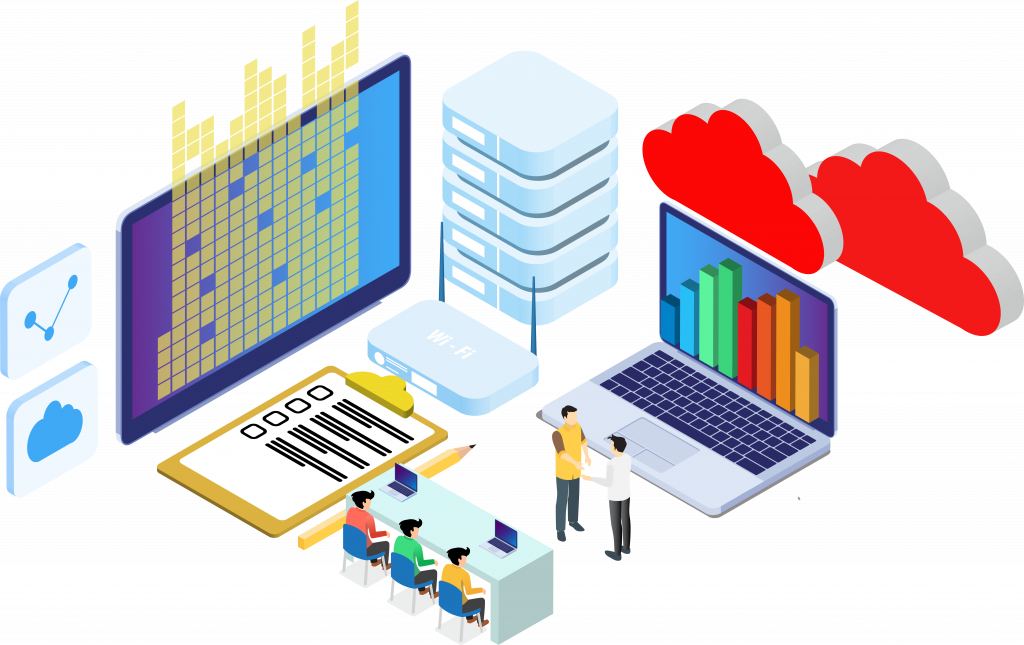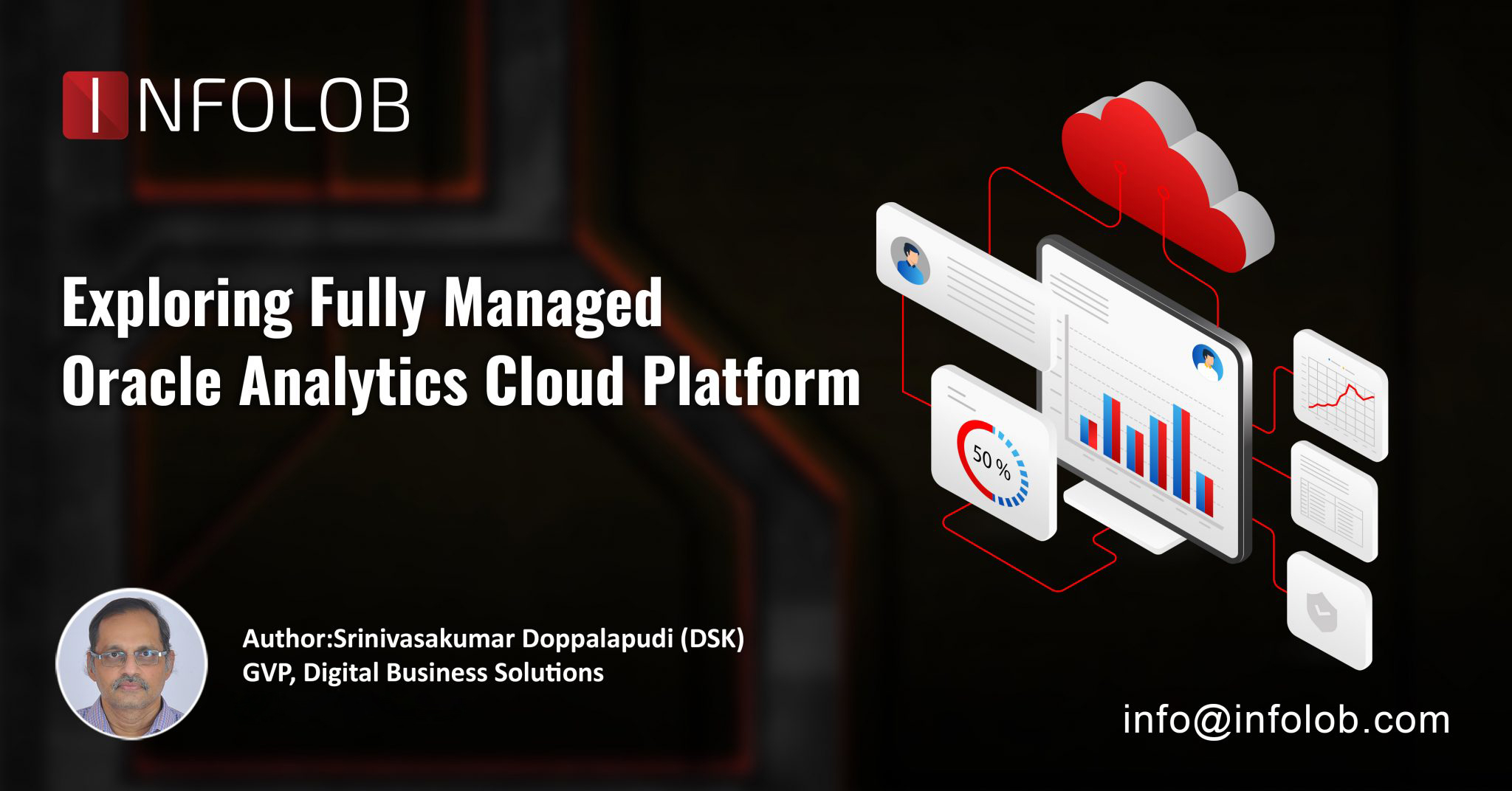Oracle Analytics Cloud is an extensive cloud-powered business intelligence (BI) and analytics platform provided by Oracle. This fully managed platform is crafted to enrich both business users and analysts by enabling them to query and analyze their data seamlessly across various environments and devices. OAC offers a range of intelligent analysis options and boasts ease of deployment and governance. One of its key vantage points is the elimination of concerns associated with infrastructure provisioning and management, making it an appealing choice for countless large and compact organizations.
Let us begin with some of the primary features and capabilities of Oracle Analytics Cloud:
- Self-Served Data Accessibility: OAC allows users to create visual representations of their data and share these insights with co-workers effortlessly.
- Data Prep and Enrichment: The platform incorporates data preparation and enrichment directly into the analytics cloud, streamlining the data preparation process.
- Business Case Modeling: OAC includes a robust modeling engine that supports multidimensional and visual analysis, facilitating the creation of business scenarios.
- Mobility: OAC features a mobile application that proactively delivers contextual insights based on users’ daily activities and routines.
- Accountability, Security, and Management: It provides robust enterprise-level reporting, governance, and security features. A semantic layer helps translate complex data into familiar business terms for widespread sharing within the organization.

Message for the OBIEE Fans
Oracle Business Intelligence Enterprise Edition (OBIEE) is a business intelligence platform architected by Hyperion and Siebel Systems – currently owned by Oracle. While OBIEE has been in use for a substantial period, Oracle has announced the end of support for this platform, resulting in migration challenges for OBIEE users. They have three primary migration options:
- Oracle Analytics Cloud (OAC): A cloud-powered descendant of OBIEE, offering additional features, particularly in self-reliance and data visualization.
- Oracle Analytics Server (OAS): An on-premises variant of Oracle Analytics Cloud, suitable for organizations that wish to manage their infrastructure.
- Intermediary Cloud-Powered Tools: Users can explore third-party cloud-powered analytics tools.
Key Capabilities and Perks of OAC
- Data Presentation: OAC can ingest data from multiple sources, performing data profiling and purifying during the loading process. Data updates can be orchestrated, guaranteeing access to fresh information for dashboards and reports.
- Data Flow: OAC provides data flow features for data transformation and aggregation, either using ETL tools before loading data or the platform.
- Data Visualization: The platform offers an intuitive drag-drop interface for generating data visualizations, significantly enhancing competencies compared to OBIEE.
- Data Aggregation: OAC facilitates cohesion by allowing users to create and share reports and visualizations, provided they have appropriate data access authorization.
Oracle Analytics Cloud Modules
- BI Cloud: Used for building visualizations, it can leverage data models from OBIEE for a smoother transition.
- Essbase Cloud: A cloud-based business analytics solution for managing complex multidimensional data models.
- Data Visualization Desktop: Enables users to connect to data in Business Intelligence Cloud and Oracle Essbase Cloud for crafting data visualizations, which can be shared via Data Visualization Cloud Services (DVCS).
- Smart View: A tool for integrating Oracle Analytics Cloud BI content with Microsoft Office products.
- Day-by-Day: A mobile app offering predictive insights based on user location and data-sharing preferences.
Additionally, OAC users can use a BI connector to enable intermediary BI tools like Power BI and Tableau to access OAC data.
Obstacles and Shortcomings in OAC
- Data Modeling Endeavors: OAC requires data to be represented in a dimensional framework (e.g., star schema) before querying and analysis, necessitating ETL operations and potentially resulting in data granularity loss.
- Shortfall of App-Ready Single Glass Pane: While OAC provides powerful data visualization tools, it lacks ready-made dashboards for enterprise applications like SAP and Salesforce, requiring organizations to develop their own dashboards.
Why Choose INFOLOB for Oracle Analytics Cloud
Ever since the inception of Oracle Analytics Cloud, INFOLOB has been a go-to implementation and management partner for multiple Fortune 500, and startups spread globally. Owing to our phenomenal track record, we were recently honored with two of the most prestigious titles by Oracle. One is the “APAC’s #1 and World’s Top 5 Game Changer Tech Service Delivery Partner of the Year 2022”, and the other one is “Solution Innovation Partner – India Business Agility.” With over 400 Oracle-certified experts and a delivery center in every global financial hub – we are proud to have created an environment of accessibility and excellence for businesses wishing to harness the Oracle Analytics Cloud without making trade-offs with inefficiencies, unfulfilled objectives, overspends, or risks. Have queries to be answered before getting started?
Please feel free to write to me:





